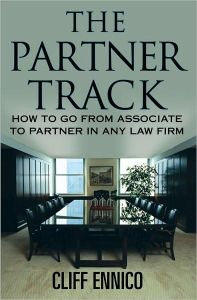Join getAbstract to access the summary!

Join getAbstract to access the summary!
Cliff Ennico
The Partner Track
How to Go from Associate to Partner in any Law Firm
Kaplan Publishing, 2009
What's inside?
You must possess a little Machiavelli in your makeup to become a partner at a corporate law firm.
Recommendation
Attorney Cliff Ennico is an expert on what it takes to become a partner at a corporate law firm. In this insider’s career guidebook for young lawyers, he explains that making partner has little to do with your good work (though one sizable mistake will sink your prospects) and everything to do with whether the partners, associates and staffers like you. If they don’t, you stand a better chance of growing wings and flying backward to Neptune than of making partner. If you are willing to work 100-hour weeks for years, handling boring, technical legal matters, and if you are goof-proof, congenial and a bit Machiavellian, in 10 to 15 years you may become a partner. Ennico provides worthwhile recommendations on what you must do to grab that brass ring. getAbstract thinks his savvy book will improve your odds of joining the partners’ ranks, if you have the stamina (and don’t come to your senses before the race is run).
Summary
About the Author
Attorney Cliff Ennico is an expert on the legal ramifications of entrepreneurship. A prolific author, he formerly hosted PBS’s “MoneyHunt” and “MoneyHunt Small Business Challenge.”
















Comment on this summary